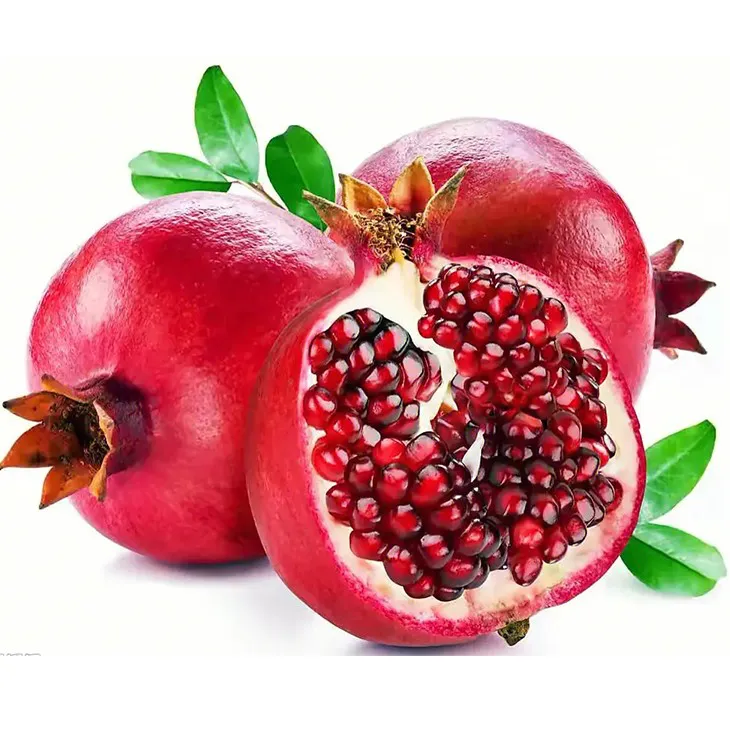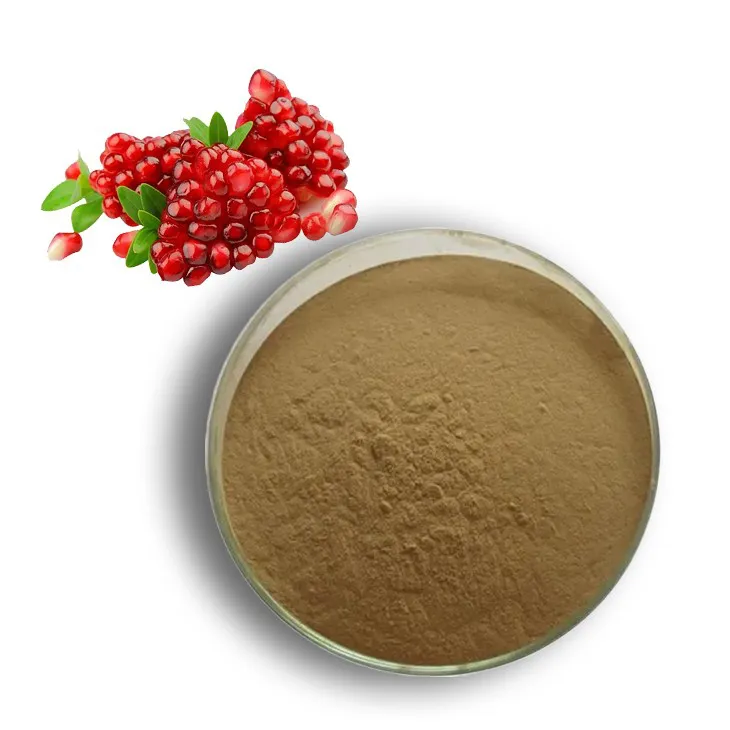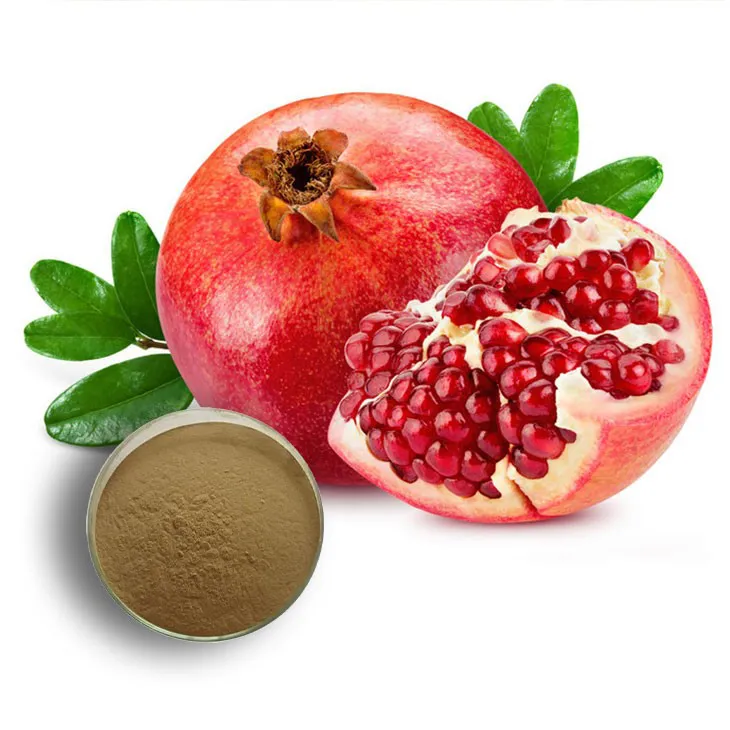- 0086-571-85302990
- sales@greenskybio.com
Pomegranate Extract: From Leaves to Extraction.
2024-11-13

1. Introduction
The pomegranate (Punica granatum) has been revered for centuries not only for its delicious fruit but also for its various medicinal and health - promoting properties. While the fruit has received significant attention, the leaves of the pomegranate are also a valuable source of bioactive compounds. Pomegranate Extract, obtained from the leaves, has a wide range of potential applications in medicine, food, and cosmetics. Understanding the journey from the leaves to the extraction process is crucial for harnessing the full potential of this remarkable extract.

2. Pomegranate Leaves: A Rich Source of Bioactive Compounds
2.1 Chemical Composition
Pomegranate leaves are rich in polyphenols, which are secondary metabolites known for their antioxidant, anti - inflammatory, and antimicrobial properties. Some of the major polyphenols found in pomegranate leaves include ellagic acid, flavonoids (such as Quercetin, rutin, and kaempferol), and tannins. These compounds play a vital role in the biological activities associated with Pomegranate Extract.- Ellagic acid has been shown to have anti - cancer properties, inhibiting the growth of cancer cells in vitro and in vivo.
- Flavonoids contribute to the antioxidant capacity of the extract, scavenging free radicals and protecting cells from oxidative damage.
- Tannins possess astringent properties and can also act as antimicrobial agents.
2.2 Health - Promoting Properties of Pomegranate Leaves
- Antioxidant Activity: The high concentration of polyphenols in pomegranate leaves makes them a potent source of antioxidants. Antioxidants are essential for neutralizing free radicals in the body, which are associated with various diseases such as cancer, heart disease, and neurodegenerative disorders.
- Anti - Inflammatory Effects: Pomegranate leaf extract has been shown to possess anti - inflammatory properties. It can reduce inflammation in the body by inhibiting the production of inflammatory mediators such as cytokines and prostaglandins. This makes it potentially useful in the treatment of inflammatory diseases like arthritis.
- Antimicrobial Activity: The tannins and other bioactive compounds in pomegranate leaves give the extract antimicrobial properties. It can inhibit the growth of bacteria, fungi, and viruses, making it a promising natural alternative to synthetic antimicrobial agents.

3. The Extraction Process
3.1 Pretreatment of Pomegranate Leaves
Before extraction, the pomegranate leaves need to be properly pretreated. This typically involves cleaning the leaves to remove any dirt, debris, or contaminants. The leaves may also be dried to reduce moisture content, which can improve the efficiency of the extraction process. Drying can be done using various methods such as air drying, sun drying, or using a dehydrator.- Air drying is a simple and cost - effective method, but it may take longer compared to other methods.
- Sun drying is also a traditional method, but it may be affected by weather conditions and may not be suitable for large - scale production.
- Using a dehydrator can provide more controlled drying conditions, ensuring consistent quality of the dried leaves.
3.2 Extraction Methods
There are several methods for extracting bioactive compounds from pomegranate leaves, each with its own advantages and limitations.- Solvent Extraction:
- One of the most common methods is solvent extraction. Solvents such as ethanol, methanol, or water can be used to extract the bioactive compounds from the leaves. Ethanol is often preferred due to its ability to dissolve a wide range of polyphenols and its relatively low toxicity.
- The extraction process typically involves soaking the dried pomegranate leaves in the solvent for a certain period of time, followed by filtration to separate the extract from the solid residue. The solvent is then evaporated to obtain the concentrated extract.
- However, solvent extraction may require large amounts of solvent, which can be costly and may have environmental implications.
- Supercritical Fluid Extraction (SFE):
- Supercritical fluid extraction is an advanced technique that uses supercritical fluids, such as carbon dioxide (CO₂), as the extraction solvent. Supercritical CO₂ has properties similar to both a gas and a liquid, allowing it to penetrate the plant material and extract the bioactive compounds effectively.
- This method has several advantages over solvent extraction. It is a cleaner process as CO₂ is non - toxic, non - flammable, and can be easily removed from the extract. It also allows for more selective extraction of specific bioactive compounds.
- However, SFE requires specialized equipment and is more expensive, which may limit its widespread use.
- Microwave - Assisted Extraction (MAE):
- Microwave - assisted extraction is a relatively new technique that uses microwave energy to accelerate the extraction process. Microwaves can heat the solvent and the plant material rapidly, increasing the mass transfer rate of the bioactive compounds from the leaves to the solvent.
- This method can significantly reduce the extraction time compared to traditional solvent extraction methods. It also has the potential to improve the yield of the extract.
- However, MAE requires careful control of the microwave power and extraction time to avoid degradation of the bioactive compounds.
3.3 Purification and Concentration of the Extract
After the initial extraction, the obtained extract may contain impurities and may need to be purified. Purification methods can include filtration, centrifugation, and chromatography techniques.- Filtration can remove larger particles and debris from the extract. Centrifugation can be used to separate the extract from any remaining solid particles by applying centrifugal force.
- Chromatography techniques, such as high - performance liquid chromatography (HPLC), can be used to separate and purify specific bioactive compounds in the extract. This allows for the production of a more pure and concentrated extract.
- Concentration of the extract can be achieved by evaporating the solvent under reduced pressure or using other concentration methods. A more concentrated extract may be more suitable for certain applications, such as in the pharmaceutical industry where high - potency formulations are required.

4. Potential Benefits in Different Sectors
4.1 Medicine
Pomegranate extract has shown great potential in the field of medicine.- Cancer Treatment: As mentioned earlier, ellagic acid and other bioactive compounds in the extract have anti - cancer properties. They can inhibit the growth and proliferation of cancer cells, induce apoptosis (programmed cell death), and may also have chemo - preventive effects. Research is ongoing to explore the use of pomegranate extract in combination with traditional cancer therapies.
- Cardiovascular Health: The antioxidant and anti - inflammatory properties of pomegranate extract can benefit cardiovascular health. It can help reduce oxidative stress and inflammation in the blood vessels, lower blood pressure, and improve lipid profiles. This may reduce the risk of heart disease and stroke.
- Diabetes Management: Some studies suggest that pomegranate extract may have a role in diabetes management. It can improve insulin sensitivity, regulate blood glucose levels, and may also protect against diabetic complications such as neuropathy and nephropathy.
4.2 Food
In the food industry, pomegranate extract can be used as a natural food additive.- Antioxidant in Food Preservation: The antioxidant properties of the extract can be utilized to extend the shelf life of food products. It can prevent oxidative rancidity in fats and oils, and also protect the color, flavor, and nutritional value of food.
- Functional Food Ingredient: Pomegranate extract can be added to various food products such as beverages, yogurts, and baked goods to enhance their nutritional value. It can provide consumers with the health benefits associated with the bioactive compounds in the extract.
4.3 Cosmetics
Pomegranate extract is also finding increasing use in the cosmetics industry.- Skin Care: The antioxidant and anti - inflammatory properties of the extract make it suitable for skin care products. It can protect the skin from oxidative damage, reduce inflammation, and may also have anti - aging effects. Pomegranate extract can be found in creams, lotions, and serums.
- Hair Care: In hair care products, pomegranate extract can improve hair health. It can strengthen the hair shaft, prevent hair loss, and may also add shine to the hair.

5. Conclusion
The journey from pomegranate leaves to the extraction of bioactive compounds is a complex but rewarding one. Pomegranate leaves are a rich source of bioactive compounds with numerous health - promoting properties. The extraction process, whether it is solvent extraction, supercritical fluid extraction, or microwave - assisted extraction, plays a crucial role in obtaining a pure and concentrated extract. The potential benefits of pomegranate extract in medicine, food, and cosmetics sectors are significant, highlighting its importance in modern applications. As research continues, we can expect to see more innovative uses of pomegranate extract in the future, further exploiting the valuable properties of this natural resource.
FAQ:
What are the bioactive compounds in pomegranate leaves?
The pomegranate leaves contain various bioactive compounds such as polyphenols, flavonoids, and tannins. These compounds have antioxidant, anti - inflammatory, and antimicrobial properties, which contribute to the potential benefits of pomegranate extract.
What are the advanced extraction techniques for pomegranate extract?
Some of the advanced extraction techniques include supercritical fluid extraction, microwave - assisted extraction, and ultrasound - assisted extraction. These techniques are designed to obtain the purest form of the extract efficiently. For example, supercritical fluid extraction uses a solvent in a supercritical state, which has unique properties for better extraction. Microwave - assisted extraction uses microwave energy to speed up the extraction process, and ultrasound - assisted extraction utilizes ultrasonic waves to enhance mass transfer during extraction.
How is pomegranate extract used in the medicine sector?
In the medicine sector, pomegranate extract may be used for its antioxidant and anti - inflammatory properties. It may have potential in preventing or treating certain diseases such as cardiovascular diseases, cancer, and neurodegenerative diseases. For instance, its antioxidant properties can help reduce oxidative stress in the body, which is associated with many diseases. Some studies also suggest that it may have antibacterial effects that could be useful in treating infections.
What are the applications of pomegranate extract in the food industry?
In the food industry, pomegranate extract can be used as a natural preservative due to its antimicrobial properties. It can also be added as a flavoring agent or a functional ingredient in various food products. For example, it can be added to beverages, dairy products, or baked goods to enhance their nutritional value and flavor. Additionally, its antioxidant properties can help extend the shelf - life of food products.
How does pomegranate extract benefit the cosmetics sector?
In the cosmetics sector, pomegranate extract is valued for its antioxidant and anti - aging properties. It can be used in skin care products such as creams, lotions, and serums to protect the skin from free radical damage, reduce wrinkles, and improve skin elasticity. It may also have anti - inflammatory effects on the skin, which can be beneficial for treating skin conditions like acne or eczema.
Related literature
- Pomegranate: Botany, Horticulture, Breeding"
- "Bioactive Compounds from Pomegranate: Isolation, Structure Elucidation, and Biological Activity"
- "The Therapeutic Potential of Pomegranate in Cancer and Inflammatory Diseases"
- ▶ Hesperidin
- ▶ Citrus Bioflavonoids
- ▶ Plant Extract
- ▶ lycopene
- ▶ Diosmin
- ▶ Grape seed extract
- ▶ Sea buckthorn Juice Powder
- ▶ Fruit Juice Powder
- ▶ Hops Extract
- ▶ Artichoke Extract
- ▶ Mushroom extract
- ▶ Astaxanthin
- ▶ Green Tea Extract
- ▶ Curcumin
- ▶ Horse Chestnut Extract
- ▶ Other Product
- ▶ Boswellia Serrata Extract
- ▶ Resveratrol
- ▶ Marigold Extract
- ▶ Grape Leaf Extract
- ▶ New Product
- ▶ Aminolevulinic acid
- ▶ Cranberry Extract
- ▶ Red Yeast Rice
- ▶ Red Wine Extract
-
Peppermint Oil
2024-11-13
-
Fenugreek Extract Powder
2024-11-13
-
Panax Ginseng Leaf Extract
2024-11-13
-
Cat Claw Extract
2024-11-13
-
Ginseng Root Extract
2024-11-13
-
Curcumin
2024-11-13
-
Kidney Bean Extract
2024-11-13
-
Black Garlic Extract
2024-11-13
-
Lemon Balm Extract
2024-11-13
-
Red Vine Extract
2024-11-13





















